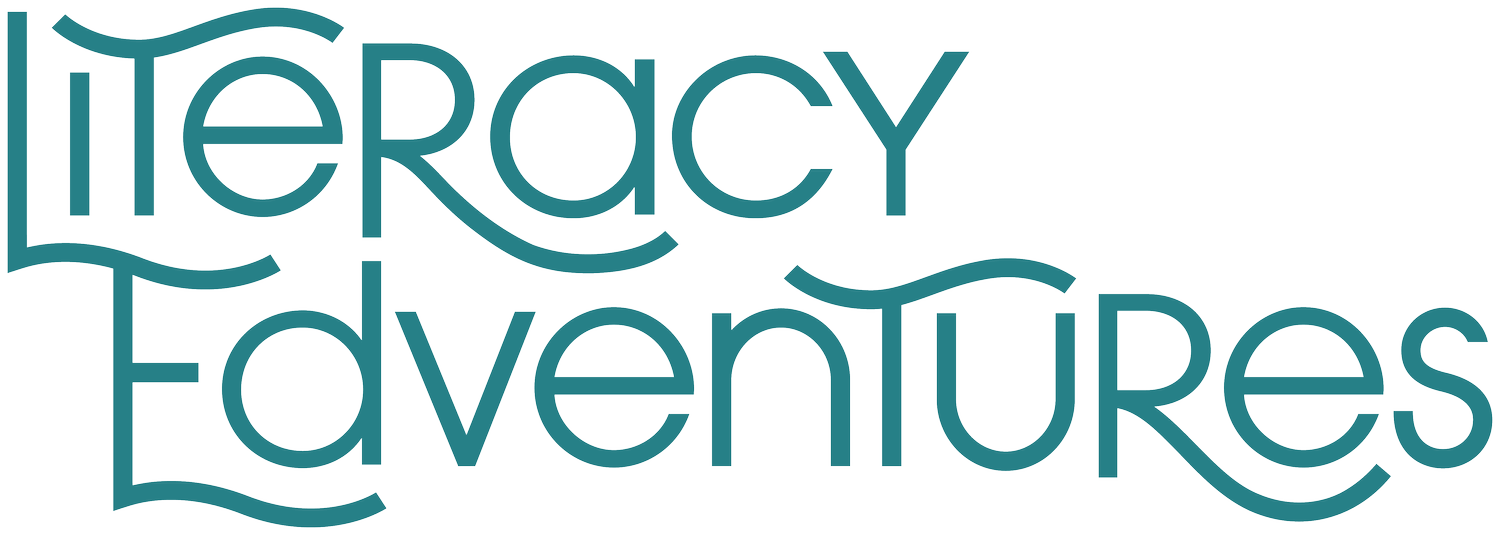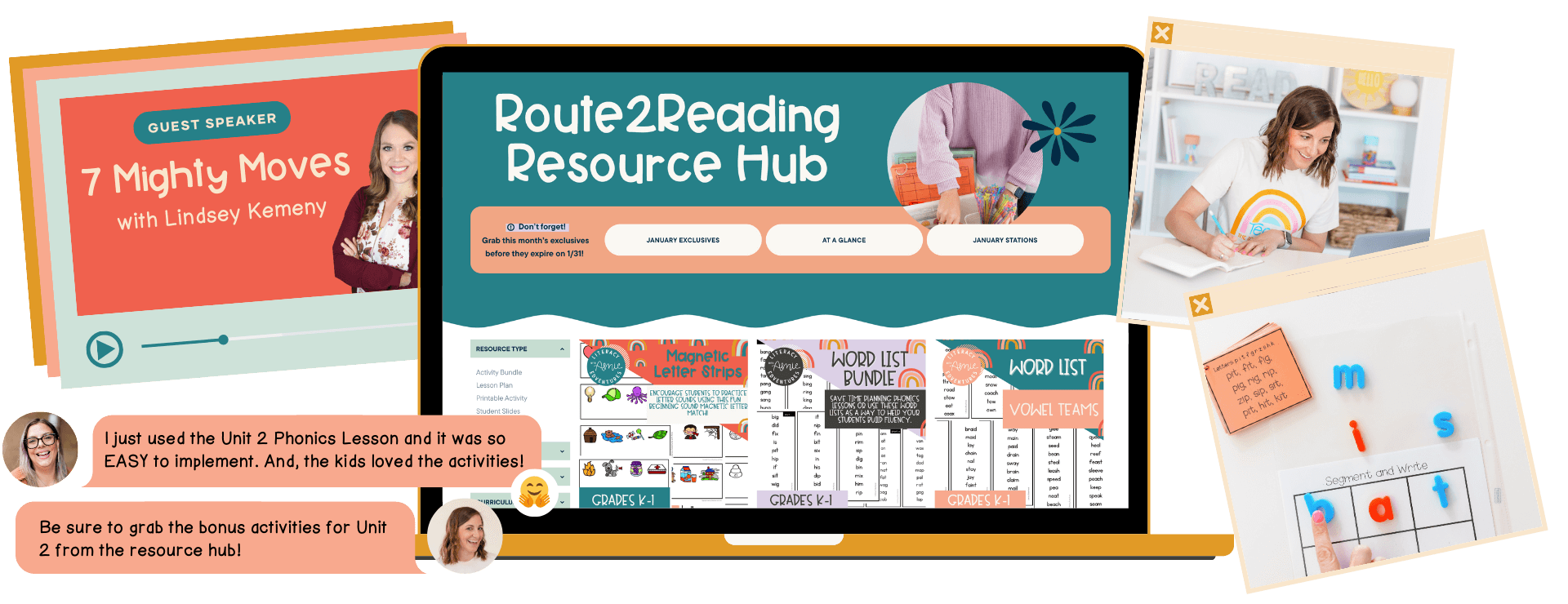5 Small Group Reading Must-Haves Every Teacher Needs
Small group reading time is where so much magic happens — our students get the targeted instruction and practice they need to become confident readers.
But setting up your small group table? That can feel overwhelming.
There are so many materials and tools you could buy — but you don’t need a cluttered table or endless bins to be effective.
You just need a few small group reading must-haves that truly support skill development.
After years of trial, error, and way too many unused baskets, these are the five essentials I always reach for — the ones that make a real difference for students (and make my small group time run smoothly!).
My Must-Have Tools and Resources
1. Magnetic Letters for Word Chaining
One of the fastest ways to strengthen phonics skills is through hands-on word chaining, and magnetic letters make it an easy and fun activity.
Students can physically manipulate letters to build, change, and blend words. This helps solidify the understanding that words are made up of individual sounds (phonemes) that can be changed to create new words.
How I Use Them:
Build the base word together (e.g., cat)
Change one letter to make a new word (e.g., cat ➔ cap ➔ map ➔ mop)
Practice chaining multiple words by changing just one sound at a time
Show students how prefixes/suffixes attach to base words later in the year
Quick Tip:
Color-code your vowel letters differently from consonants (like red vowels and blue consonants) — it helps students visually recognize vowel placement within words.
🔹 Why It Matters:
Chaining words deepens phonemic awareness, supports flexible decoding, and builds a strong foundation for spelling.
2. Dry-Erase Boards and Markers
If you had to pick just one tool for small-group reading, dry-erase boards would be it.
They are incredibly versatile and allow students to practice without the fear of "permanent mistakes."
Ways I Use Them:
Quick sound mapping activities
Word dictation during phonics lessons
Sentence dictation for connected text practice
Rapid-fire decoding and encoding games
Student self-correction after immediate feedback
Students love the low-pressure feeling of erasing and trying again — it encourages risk-taking and growth without fear of getting it "wrong."
Set-Up Tip:
Keep a board, marker, and mini eraser (a sock or tissue works!) at each small group seat so transitions are lightning-fast. If you don’t have whiteboards, white cardstock and sheet protectors will do the trick!!
🔹 Why It Matters:
Immediate practice + immediate feedback = one of the fastest ways to close skill gaps!
3. Sound Boxes (Elkonin Boxes) for Phonemic Awareness
Many students who struggle with reading are actually missing phonemic awareness skills — the ability to hear and manipulate sounds within words.
Sound boxes (Elkonin boxes) are an easy, powerful way to build these skills visually and kinesthetically.
How I Use Them:
Tap out each phoneme and push a chip into a box for each sound (/c/ /a/ /t/ = three chips, three boxes)
Spell simple words after segmenting sounds
Practice adding, deleting, or substituting sounds to form new words
You can laminate simple printed sound boxes, draw them on whiteboards, or use pre-made mats.
Materials:
Chips, counters, pennies, or mini-erasers all work for moving into the boxes — just make it tactile!
Scaffolding Tip:
Start with simple VC or CVC words before moving to blends and longer words.
🔹 Why It Matters:
Strong phonemic awareness is one of the most reliable predictors of future reading success — and sound boxes connect hearing sounds to actually reading and writing them.
4. Decodable Texts That Match Your Scope and Sequence
Reading connected text is the ultimate goal — but it’s critical that students are practicing words they can actually decode based on what you've taught. That’s why having a set of high-quality decodable texts is a non-negotiable.
What to Look For in Decodables:
Matches your phonics sequence (e.g., if you’re working on short vowels, the text should feature lots of CVC words)
Minimal guessing required — students should be able to decode the vast majority of words independently
Gradual progression to build stamina and fluency
A handful of heart words (high-frequency words taught for memory)
How I Use Them:
Introduce a new phonics skill
Provide real reading practice connected to phonics lessons
Reread for fluency growth
Scaffold comprehension discussions after decoding work
Pro Tip:
Prep your decodables for the week. Look ahead at what skills your students will be focusing on and pull a few. Stick them in their small group bin. After they have read them a couple of times with you, place them in their independent reading bin.
🔹 Why It Matters:
Success with decodable texts helps bridge the gap between phonics skills and real-world reading, building both confidence and competence.
5. A Primary Writing Notebook for Dictation Practice
While whiteboards are fantastic for quick, low-stakes practice, I also love giving students their own small primary notebook dedicated solely to dictation work.
It becomes a personal reading and spelling journal — and students take so much pride in watching their growth unfold over time.
But it’s not just for student reflection — these notebooks also become a powerful progress-monitoring tool.
They offer a clear, ongoing record of:
What phonics patterns have students been taught
How well they’re applying those patterns in both words and sentences
Their ability to encode (spell), use capitalization, punctuation, and apply conventions over time
That makes these notebooks especially valuable during:
Parent-teacher conferences (to show growth and areas of need)
Data team meetings (as informal evidence of skill progression)
Intervention planning (to align decoding and encoding instruction)
How I Use It: (full blog post on dictation here)
Grab these dication helpers (pictured below)
Word dictation: Students spell words aligned to current phonics instruction
Sentence dictation: We apply phonics and mechanics together
Quick mini-assessments: “Write the word tap. Now change it to taping.”
End-of-week review: “Write five words we practiced this week”
**If you need a quick dictation reference, grab my dictation helpers here. I like to print them and place them on a ring for easy reference with each group! It’s like having preplanned words and sentences at your fingertips!
Set-Up Tip:
Use simple or primary-lined composition books I love these. You can cut them in half at a local print shop! Label each student’s name, and keep them organized in a bin at the small group table. You can even add tabs or sticky notes to mark weeks or specific phonics patterns.
Why It Matters:
Dictation notebooks:
Reinforce phonics and spelling through daily application
Strengthen written expression and conventions
Build confidence and ownership of learning
Serve as a running progress portfolio, you can easily pull out for data or family meetings
BONUS: Pointer Tools for Tracking Print
It might seem simple, but one of the foundational skills of early reading is tracking print accurately — and pointer tools make it fun and engaging.
How I Use Them:
One-to-one correspondence practice (pointing to each word as it's spoken)
Tracking multi-line text with correct return sweep (moving eyes/finger from line to line)
Building early fluency and phrasing
Favorite Pointer Tools:
Finger lights
Magic wands
Themed seasonal pointers (mini pumpkins, candy canes, witch fingers, etc.)
No Fancy Pointer?
Fingers work just as well — what matters is the attention to print!
Engagement Tip:
Let students "earn" their pointer for the day as a motivator!
🔹 Why It Matters:
Accurate tracking lays the groundwork for fluency, phrasing, and ultimately, strong comprehension.
Wrap Up:
You don’t need dozens of fancy programs or tools to create a strong small group reading space.
When you focus on these five small group reading must-haves — magnetic letters, dry erase boards, sound boxes, decodable texts, and pointer tools (plus a bonus primary notebook!) — you build a system that’s simple, effective, and completely aligned with how kids learn best.
Less overwhelm. More intentional practice.
Real, visible reading growth.
You’ve got everything you need to make small group reading a powerful part of your literacy block — starting today! 📚✨
Do you love tips, tricks, and community centered around reading?
I understand that buying each resource separately can quickly ADD UP. As a teacher, I know we have to make the money we spend COUNT! But don’t worry—there’s a more straightforward, more efficient solution with Route2Reading, my K-2 membership designed to streamline planning, prepping, and teaching small group instruction.
Rather than spending your weekends glued to your computer, searching for Science of Reading-aligned phonemic awareness, phonics lessons, and decodable texts for your small groups, you can log in to Route2Reading.
Choose the focus skill for the week, download the detailed, step-by-step lesson plans and activities, and your small group instruction is ready to go in just a few clicks. Planning has never been easier!









